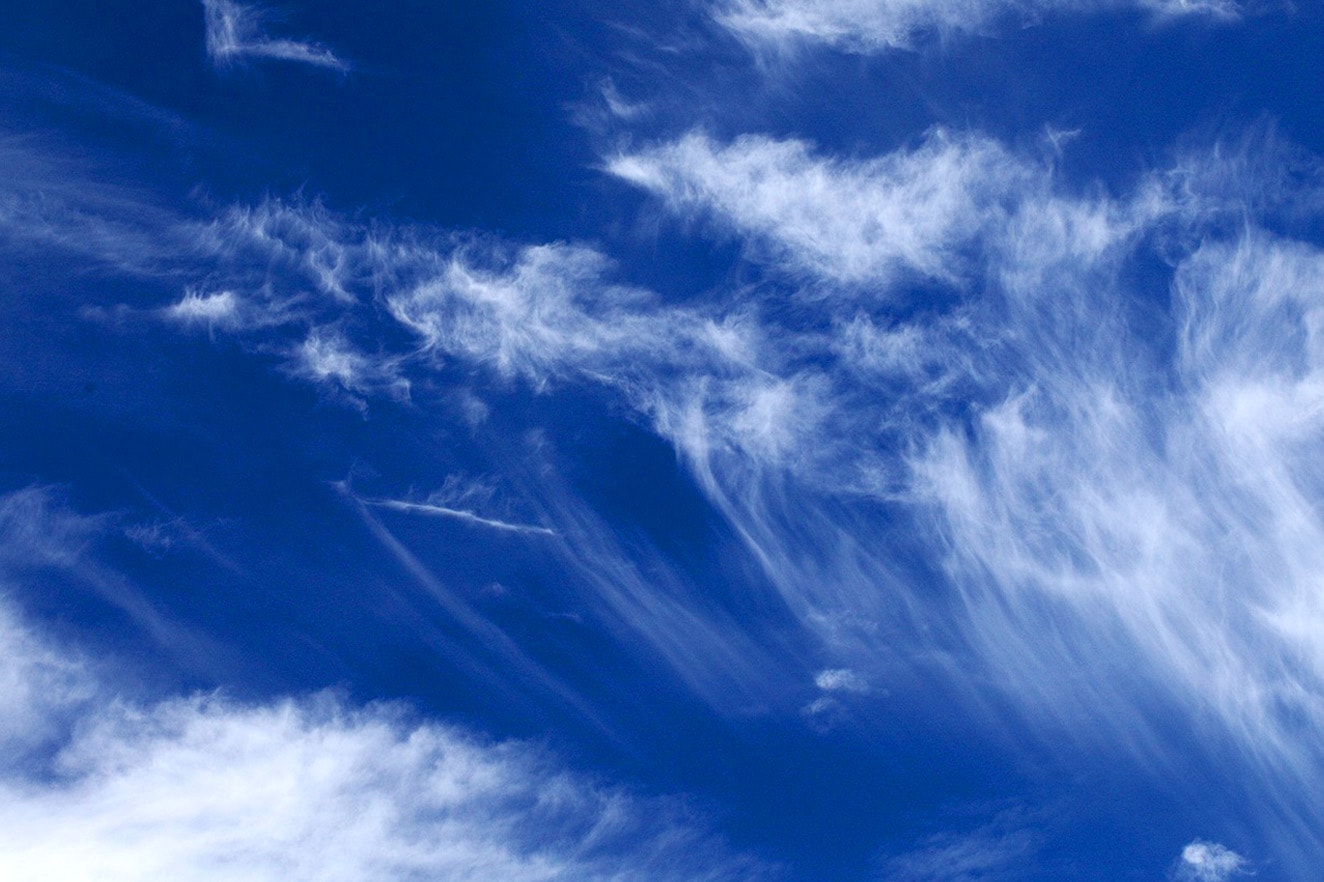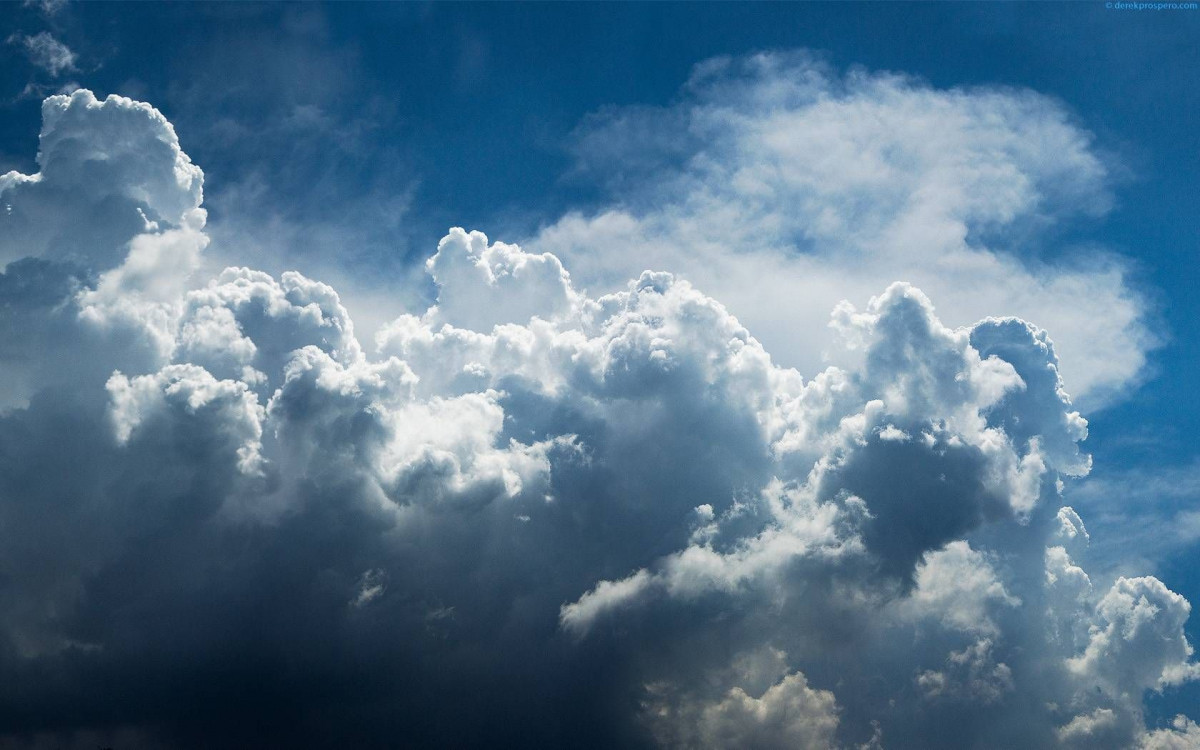
Clouds have always been the object of human study. Surely when we were younger we wondered what are the clouds made of. It has always seemed to us like cotton clouds with a fluffy appearance. However, this is not at all like that.
In this article we are going to tell what clouds are made of, features and how it is formed.
What are the clouds made of

In simple terms, it can be said that a cloud is a mass of water droplets, ice crystals, or both, suspended in the atmosphere and formed as a result of the condensation of water vapor in the atmosphere. Clouds come in many varieties and can be distinguished by their shape and height.
Cloud formation requires three components: water vapor in the atmosphere, particles that allow it to condense, and low temperatures. The atmosphere is composed of a variety of gases, including water vapor from the evaporation of water, plant transpiration and glacial sublimation. But this suspended vapor cannot form clouds on its own. In order for water vapor to agglutinate, it needs a "condensation nucleus" or "aerosol", which simply corresponds to a particle with hygroscopic properties (high affinity for water), which allows the grouping of water vapor molecules and their subsequent condensation.
These potential nuclei are abundant in the atmosphere and include dust, pollen, grains of salt from the ocean and breaking waves, and ash from volcanic eruptions or fires. Once these two ingredients are found, further steps are required to become a cloud. Water vapor and condensation nuclei must encounter lower temperatures to reach the dew point, or the temperature at which water vapor molecules will transform into liquid water droplets.
One way to cool the air mass is to force it up by convection. Convection occurs when the sun heats the Earth's surface and then transfers some of that heat to the nearest air mass. This mass of warm air will be less dense than the surrounding air, so it will rise easily due to buoyancy, which corresponds to the upward force exerted by the less dense fluid.
Training

An air mass moving horizontally (such as in a cold front) can also be forced to heat up when it meets a mountain peak along the way or encounters another, cooler air mass. In both cases, horizontally moving air mass will be forced to rise and quickly reach the dew point, producing clouds and, if conditions are right, rain.
Once the air mass rises and cools to the dew point, water vapor begins to condense in the condensation nucleus, creating the first liquid water particles. After reaching a certain size, these first water particles begin to collide and stick together in a process called collision-coalescence. Depending on their composition, clouds can be classified as cold (high clouds made up of ice crystals), warm (low clouds made up of water) or mixed (medium clouds made up of ice crystals and water). Although the temperature is well below 0°C, the cloud may contain liquid water. This water is called "supercooled water" and can be found, for example, in moderate clouds formed by drops of water and ice, which normally form between -35° and -10°C.
To form ice crystals, an ice core (ice core) is required. To get an idea of the dimensions we have discussed, each droplet is approximately 0,001 microns in size (1 micron is one millionth of a meter). On the other hand, to form a raindrop that can pass through the updraft and reach the surface, it must measure at least 1 millimeter, so the condensation nucleus must gather around a million drops.
Why do clouds float?

Clouds can stretch for kilometers vertically and horizontally, weigh tons, and still "hover" in the air. We have pointed out in the previous paragraphs that due to buoyancy, a warmer air mass rises in the atmosphere, which is propelled by a cooler mountain or other air mass. A good example to illustrate the relative brightness of clouds is to compare their total mass to the mass of the air they are in.
Take as an example a typical cloudlet with an altitude of 3000 meters and 1 cubic kilometer, its liquid water content is 1 g/cubic meter. The total mass of cloud particles is about 1 million kilograms, roughly equivalent to the weight of 500 cars. But the total mass of surrounding air in the same cubic kilometer is about a billion kilograms, which is 1000 times heavier than liquid! So even though typical clouds contain a lot of water, because their mass is less than that of the surrounding air, they appear to float in the sky, swaying at the same height as the wind moves.
Cloud types
Once we know what clouds are made of, we must know what types there are. Clouds can be seen with the naked eye and are classified according to an international system created in 1803 by the British chemist and amateur meteorologist Luke Howard, who classified clouds into four main categories or forms:
- cirriformis, cirrus clouds, which are raised, beam-shaped plumes made of ice crystals;
- Stratiform, stratus, extensive cloud layers that frequently bring continuous rain;
- nimbiformes, nimbuses, clouds capable of forming precipitation;
- cumuliforms, cumulus, puffy flat-based clouds that cross the summer sky.
Current cloud classification systems include many combinations and subdivisions of these four basic categories. When a meteorologist talks about precipitation, refers to rain, snow, or any form of liquid or solid water that settles or falls from the sky. Precipitation is measured with rain gauges. The simplest rain gauge is a straight-sided container with a scale or ruler to measure the depth of water falling into it. Most of these devices concentrate precipitation into a narrower tube to more accurately measure small amounts of precipitation. Like other weather instruments, a rain gauge can be made to record its measurements continuously.
I hope that with this information you can learn more about what clouds are made of and how they are formed.